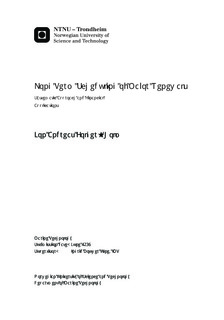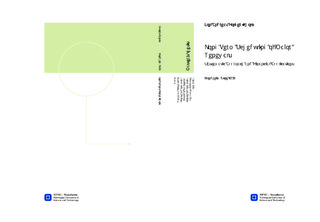| dc.description.abstract | Much of the oil and gas installations in the North Sea originate from the booming 80s and 90s, and operators are facing considerable challenges in the managementof their ageing assets. Harsh environments combined with tough operating loadsmake it so that systems must be upgraded, replaced or maintained; preventivelyor correctively. In many cases, it pays off to renew entire systems at a time, ascomponents belonging to the same systems are exposed to the same operatingloads, subject to the same obsolescence issues and interdependent.Typically, long term (strategic) plans consist of the same activities as shorter termplans. However, the degree of accuracy and detail is much lower, and they requirea greater degree of cross disciplinary coordination. It may be challenging to collectand systematise information from various entities, such as operations management,procurement, material management, suppliers, contractors and legislators.This study suggests that FPSO contractors, as part of a systematised work process,utilises "Ageing Parameters" as qualitative measures on the deterioration and obsolescence the various systems are subject to. A parameter [0,100] should be established annually for each component to symbolise its condition. The parameter canbe aggregated hierarchically from component level to system level according to theSFI structure and based on the Technical Condition Index framework by Andersenand Rasmussen (2003). Predefined criticality levels may act as weighting betweencomponents and between subsystems. The ageing should then be evaluated continuouslyusing a top-down approach, to find if there are any obvious weaknesseson component level or on subsystem level. Subsequently, if a system renewal, asopposed to minor actions, proves to be appropriate, the optimal time and type ofaction for this renewal can be decided based on experience and available information.Further on, the activities and their costs may be scheduled and the informationutilised financially.Floating production, storage and offloading vessels (FPSOs) are in many casesnot designed to spend their lifetimes on a single field, but to redeploy at end ofthe first contract. When FPSO contractors investigate redeployment opportunities,they need to know as much as possible about future expenditures, to minimise theirrisk exposure. The cost and time frame of capital replacements are vital in thisrespect. The renewal activity schedule may be utilised to calculate the discountedcash flow of such activities throughout potential contract periods and along withOPEX estimates, expected revenues, RISKEX etc. form a decision basis for thetender terms.Depreciation is the difference between an asset s acquisition cost and its estimatedresidual value, more precisely, a way of allocating costs of assets to periods inwhich they are used. Since vessels consist of systems with various useful lives,the systems (or even components) should be depreciated separately, according toInternational Accounting Standard 16. By applying the methods from this study, theremaining useful lives of systems should be more accurately estimated compared tocurrent standards in shipping, where depreciation mainly is charged as a constantcost for the vessel as one entity. More accurate depreciation may award companies reduced taxes and increased financial predictability. International AccountingStandard 16 also highlights that obsolescence issues must be accounted for whenestimating the residual value of an asset, because they contribute in the diminutionof the economic benefits that might be obtained from the asset.This study has proven that a systematic hierarchy can be established based on SFItags in computerised maintenance management systems, and that parameters oncomponent level may be aggregated by this hierarchy and the given formulas to ameaningful and robust system parameter. It is also verified that the ageing of thesystems can be evaluated systematically and effectively using a top-down approach.However, it has not been verified that the procedure can be implemented in largescalewithout taking up to much resources. Even so, the advantages this study hasrevealed, with regards to depreciation and tendering, could possibly justify the useof resources. | nb_NO |

